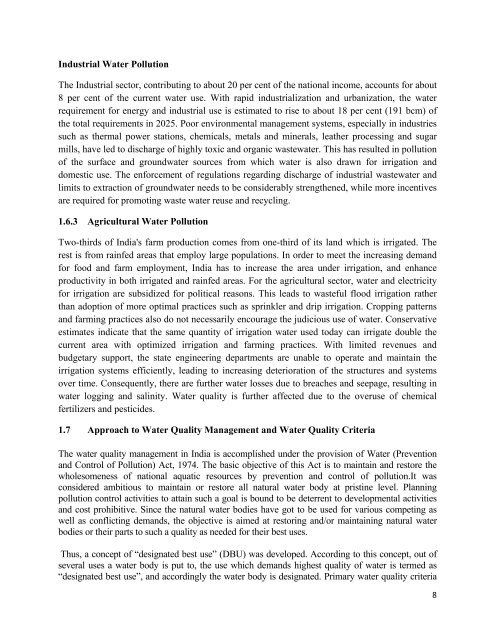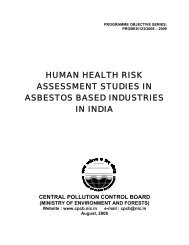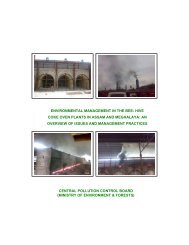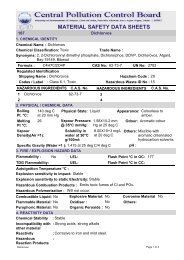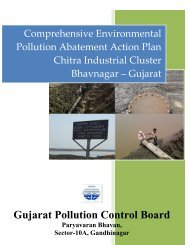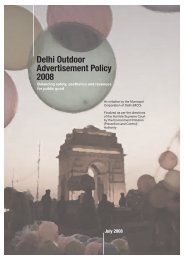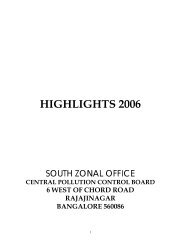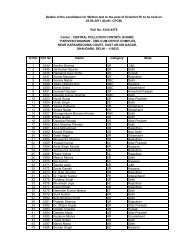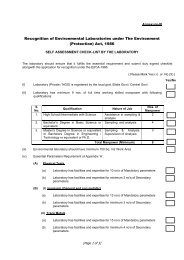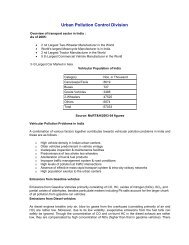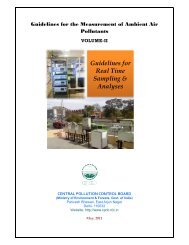Q ST QUA TAT ALIT US O TY IN OF W N IN WA NDIA ATER A- 2 R ...
Q ST QUA TAT ALIT US O TY IN OF W N IN WA NDIA ATER A- 2 R ...
Q ST QUA TAT ALIT US O TY IN OF W N IN WA NDIA ATER A- 2 R ...
You also want an ePaper? Increase the reach of your titles
YUMPU automatically turns print PDFs into web optimized ePapers that Google loves.
Industrial Water PollutionThe Industrial sector, contributing to about 20 per cent of the national income, accounts for about8 per cent of the current water use. With rapid industrialization and urbanization, the waterrequirement for energy and industrial use is estimated to rise to about 18 per cent (191 bcm) ofthe total requirements in 2025. Poor environmental management systems, especially in industriessuch as thermal power stations, chemicals, metals and minerals, leather processing and sugarmills, have led to discharge of highly toxic and organic wastewater. This has resulted in pollutionof the surface and groundwater sources from which water is also drawn for irrigation anddomestic use. The enforcement of regulations regarding discharge of industrial wastewater andlimits to extraction of groundwater needs to be considerably strengthened, while more incentivesare required for promoting waste water reuse and recycling.1.6.3 Agricultural Water PollutionTwo-thirds of India's farm production comes from one-third of its land which is irrigated. Therest is from rainfed areas that employ large populations. In order to meet the increasing demandfor food and farm employment, India has to increase the area under irrigation, and enhanceproductivity in both irrigated and rainfed areas. For the agricultural sector, water and electricityfor irrigation are subsidized for political reasons. This leads to wasteful flood irrigation ratherthan adoption of more optimal practices such as sprinkler and drip irrigation. Cropping patternsand farming practices also do not necessarily encourage the judicious use of water. Conservativeestimates indicate that the same quantity of irrigation water used today can irrigate double thecurrent area with optimized irrigation and farming practices. With limited revenues andbudgetary support, the state engineering departments are unable to operate and maintain theirrigation systems efficiently, leading to increasing deterioration of the structures and systemsover time. Consequently, there are further water losses due to breaches and seepage, resulting inwater logging and salinity. Water quality is further affected due to the overuse of chemicalfertilizers and pesticides.1.7 Approach to Water Quality Management and Water Quality CriteriaThe water quality management in India is accomplished under the provision of Water (Preventionand Control of Pollution) Act, 1974. The basic objective of this Act is to maintain and restore thewholesomeness of national aquatic resources by prevention and control of pollution.It wasconsidered ambitious to maintain or restore all natural water body at pristine level. Planningpollution control activities to attain such a goal is bound to be deterrent to developmental activitiesand cost prohibitive. Since the natural water bodies have got to be used for various competing aswell as conflicting demands, the objective is aimed at restoring and/or maintaining natural waterbodies or their parts to such a quality as needed for their best uses.Thus, a concept of “designated best use” (DBU) was developed. According to this concept, out ofseveral uses a water body is put to, the use which demands highest quality of water is termed as“designated best use”, and accordingly the water body is designated. Primary water quality criteria8


